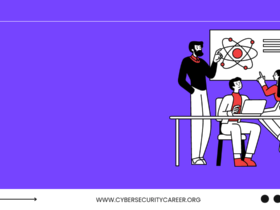In the world of cybersecurity, it’s not a matter of if you will be attacked, but when. That’s where the Cyber Kill Chain comes in – a framework used to identify and prevent cyber attacks before they can cause damage. In this blog post, we’ll dive into how implementing the Cyber Kill Chain methodology can improve your organization’s security posture and protect against even the most sophisticated threats. Buckle up and get ready to level up your cybersecurity game!
What is a Cyber Kill Chain?
A cyber kill chain is a process that is used to describe the stages of a typical cyber attack. The kill chain model was first developed by the United States military to track and stop physical attacks, but it has since been adapted for use in the cybersecurity realm.
There are seven stages in a typical cyber kill chain: reconnaissance, weaponization, delivery, exploitation, installation, command and control, and actions on objectives. Each stage presents opportunities for defenders to detect and disrupt an attack.
Reconnaissance is the first stage of the kill chain where attackers gather information about their target. This can be done through open-source intelligence gathering or by actively probing networks and systems for vulnerabilities.
Weaponization is the second stage where attackers take the information gathered during reconnaissance and turn it into an exploit that can be used to gain access to a system or network.
Delivery is the third stage where attackers deliver their exploit to their target. This can be done through email attachments, malicious websites, or drive-by downloads.
Exploitation is the fourth stage where attackers use their exploit to gain access to a system or network. Once inside, attackers can install malware or escalate their privileges to gain further access.
Installation is the fifth stage where attackers install malware or other tools that allow them to maintain persistence on a system or network. This might include creating new user accounts, modifying existing software, or adding new hardware devices.
Command and control is the sixth stage where attackers are able to control their malware and other tools remotely. This allows them to move laterally within a network or exfiltrate data back to the attackers.
Actions on objectives is the seventh stage where attackers take action according to their goals. This might include stealing data, deleting files, or disrupting services.
How does the Cyber Kill Chain Work?
The Lockheed Martin Cyber Kill Chain is a framework that can be used to help organizations understand, detect, and defend against cyber attacks. The goal of the Cyber Kill Chain is to provide a clear and concise way to describe the stages of a typical cyber attack, as well as the best ways to defend against each stage.
The Cyber Kill Chain is divided into seven stages: Reconnaissance, Weaponization, Delivery, Exploitation, Installation, Command and Control, and Actions on Objectives. Each stage represents a different phase of an attack, and each has its own unique set of challenges. By understanding the Cyber Kill Chain, organizations can more effectively detect and defend against attacks.
Reconnaissance: In this stage, attackers gather information about their target. They may use public sources of information such as websites and social media, or they may conduct more sophisticated reconnaissance using tools like Google hacking or malware.
Weaponization: In this stage, attackers turn the information they gathered in the reconnaissance stage into weapons that can be used against their target. These weapons may be malware or exploits that exploit vulnerabilities in software or hardware.
Delivery: In this stage, attackers deliver their weaponized payloads to their targets. This may be done through phishing emails, drive-by downloads, or infected USB drives.
Exploitation: In this stage, attackers use their weaponized payloads to exploit vulnerabilities in their targets’ systems. This gives them access to sensitive data or allows them
How can Cyber Kill Chain Protect Against Attacks?
The Cyber Kill Chain is a model developed by Lockheed Martin to help identify and prevent cyber attacks. It has been adopted by the US Department of Homeland Security and the National Cybersecurity Center of Excellence, among others. The model divides an attack into seven stages: reconnaissance, weaponization, delivery, exploitation, installation, command and control, and actions on objectives.
Cyber Kill Chain can help protect against attacks by identifying the stage of an attack and taking steps to prevent or mitigate it. For example, if an attacker is in the reconnaissance stage, Cyber Kill Chain can help by identifying and stopping the attack before it progresses any further. By identifying the stage of an attack, Cyber Kill Chain can help organizations respond more effectively to attacks and improve their overall security posture.
Implementing Cyber Kill Chain
Cyber Kill Chain is a methodology used by security professionals to identify and track the stages of a cyberattack. By understanding the steps involved in an attack, organizations can better defend themselves against threats.
The first step in the Cyber Kill Chain is reconnaissance. attackers will gather information about their target, such as network infrastructure and potential vulnerabilities. This information helps attackers plan their next steps and allows them to tailor their attacks to specific weaknesses.
The second step is weaponization, where attackers create payloads designed to exploit vulnerabilities in target systems. These payloads may be delivered via email, web browsers, or other means. Once delivered, they allow attackers to gain access to victim systems and begin wreaking havoc.
The third step is deployment, where attackers send their weaponized payloads to victims. This may be done through phishing emails, drive-by downloads, or other methods. Once deployed, the payloads will execute and allow attackers to begin compromising systems and stealing data.
The fourth step is exploitation, where attackers use their access to compromise victim systems and steal data. This data may include confidential information, financial records, or other sensitive data. In some cases, attackers may also plant malware on victim systems for future use.
The fifth and final step is post-exploitation, where attackers cover their tracks and attempt to maintain access to victim systems for continued use. This may involve deleting log files, disabling security features, or creating backdoors into systems
Conclusion
Cyber Kill Chain is an effective way to analyze threats and take steps to protect your system. By understanding the different stages of a cyber attack, organizations can better identify potential threats and respond quickly by mitigating or eliminating them in their early stages. This approach allows companies to prevent significant damage from occurring while also ensuring that their systems are secure against future attacks. With the right training and tools, any company can implement this method of security and help protect themselves against malicious actors online.










Leave a Reply